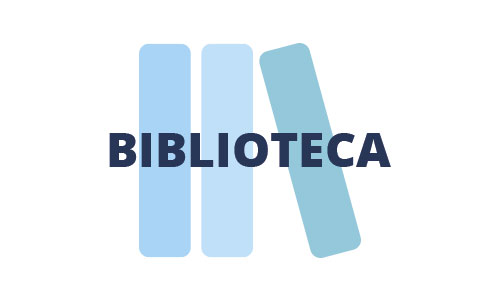The Tsunami in the Cultural Representations of the Ancient World: Gadir-Gades and the Gulf of Cádiz as a Case Study (HAR2015-66011-P - MINECO/FEDER)
Acronym: TSUNAMIGAD
Principal investigator
Duration
1st January 2016 - 31st December 2018
Financing Entity
Spanish Ministry of Economy and Competitiveness
Funding: 14700 €.
Project members
Carlos Alonso Villalobos - (IAPH - Centro de Arqueología Subacuática de Cádiz )
Giuseppe Garbati (CNR - Istituto di Studi sul Mediterraneo Antico, Roma)
Carolina López-Ruiz (Ohio State University)
Francisco Machuca Prieto (Universidad de Málaga)
Pierre Moret (CNRS - Université de Toulouse Le Mirail)
Josephine C. Quinn (Oxford University)
Summary
The project intends to examine the phenomenon of tsunamis in the Ancient World taking the Gulf of Cadiz as a case study. The first goal of the Project is to reach a better understanding of the impact that this type of natural disaster may have had in symbolic systems in ancient societies and of the forms of preservation of memory around a collective trauma such as that caused by a tsunami. It is intended to elucidate how people in Antiquity viewed this phenomenon, how it is perceived and processed in collective imagination, how it is incorporated into religious narratives and what type of apotropaic practices are generated in communities enduring such a cataclysm. To this end, the ancient city of Gadir-Gades and the Gulf of Cádiz shall be considered as a case study. This area has been hit throughout history by highly destructive tsunamis of low recurrence, relatively well documented in geologic and sedimentological records.
It is proposed to review literary traditions on Phoenician Gadir and Roman and medieval Gades incorporating also archaeological data in order to identify any indications of the impact this type of cataclysm may have had on South-Western shores of Iberia between c. 1000 B.C and c. 500 A.D. The verification of the existence of a massive tsunami in the Gulf of Cádiz in the first millennium BC, during the Phoenician-Punic period, could indicate that its effect on Gadir and on its Melqart sanctuary must have been extraordinary from a religious viewpoint. Therefore, a revision of ancient literary tradition regarding this zone shall be implemented in order to assess the influence the tsunami may have had on religious accounts involving the figure of Gaditanian Melqart. This approach shall be used to contribute to a fresh reinterpretation of mythical-geographical traditions around the figure of Heracles in the West.
The Project also intends to contribute to an improved identification of the tsunamigenic events in the Gulf of Cádiz in ancient times and, specifically, to propose a more accurte date for the EWE which has traditionally been dated to the end of the third century B.C. based on historical data in need of updating.
Project Objectives:
- To identify the symbolic keys with which the tsunami is conceived in the ncient world.
- To asses the impact of tsunamis in the cultural representations and religious practices of Southwest Iberian communities in Phoenician-Punic and Roman times.
- To contribute to a more accurate identification of extreme wave events in the Gulf of Cadiz during antiquity.
Articles, books and books chapters
> Álvarez Martí-Aguilar, M. (en preparación): “Tsunamis en el Golfo de Cádiz en época antigua: respuestas religiosas y longue durée”.
> Álvarez Martí-Aguilar, M. (en preparación): “Terremotos y tsunamis en la costa atlántica de Iberia en época antigua”.
> Álvarez Martí-Aguilar, M. (en preparación): “El papel de Gades en el discurso del imperialismo romano”.
> Álvarez Martí-Aguilar, M. (en prensa): “El retorno del cataclismo: de la Atlántida a Tarteso”.
> Álvarez Martí-Aguilar, M.: “Talismans against tsunamis: Apollonius of Tyana and the stelai of the Herakleion in Gades (VA 5.5)”, Greek, Roman, and Byzantine Studies 57.4 (2017) 968-993.
> Álvarez Martí-Aguilar, M.: “Terremotos y tsunamis en Portugal en época antigua: el legado de Bernardo de Brito y su Monarchia Lusytana (1597-1609)", Euphrosyne 45 (2017) 183-204.
> Álvarez Martí-Aguilar, M.: “La tradición historiográfica sobre catástrofes naturales en la Península Ibérica durante la Antigüedad y el supuesto tsunami del Golfo de Cádiz de 218-209 a.C.", Dialogues d'Histoire Ancienne 43/2 (2017) 117-145.
Contribution to conferences
> Álvarez Martí-Aguilar, M.: “Gli tsunami nella tradizione antica”, Seminario Acqua e distruzione, “Sapienza" Università di Roma, 17 de abril de 2018.
> Álvarez Martí-Aguilar, M.: “Proceso histórico y catástrofes naturales en la Cádiz fenicia”, I Congreso de Jóvenes Historiadores de la Universidad de Cádiz, 9-10 de abril de 2018.04/2018.
> Álvarez Martí-Aguilar, M.: “Tsunamis en el mundo antiguo: representaciones mentales y respuestas apotropaicas”, El agua en el mundo antiguo. Seminario permanente: nuevas perspectivas de investigación en Historia Antigua, Universidad Pablo de Olavide de Sevilla, 16 de febrero de 2018.
> Álvarez Martí-Aguilar, M.: “El abismo desencadenado: cataclismos en la costa atlántica de Iberia en época antigua”, Las rutas de las Estrímnides: navegación y conocimiento del océano Atlántico en época prerromana, Simposio Internacional, Universidad de Sevilla, 1-2 de febrero de 2017.
> Álvarez Martí-Aguilar, M.: “Tsunamis en el Golfo de Cádiz en época antigua: respuestas religiosas y longue durée”, Mare Sacrum. Religión, cultos y rituales fenicios en el Mediterráneo. X Coloquio Internacional del CEFYP. Homenaje al Profesor José María Blázquez, Cádiz, 13-15 de diciembre de 2017.
> Garbati, G.: “Labili dèi dal mare: osservazioni sui bronzetti provenienti dalle acque di Cadice”, Mare Sacrum. Religión, cultos y rituales fenicios en el Mediterráneo. X Coloquio Internacional del CEFYP. Homenaje al Profesor José María Blázquez, Cádiz, 13-15 de diciembre de 2017.
> Quinn, J.: “Gods against States: Phoenician Religious Practice and the Art of Not Being Governed”, Mare Sacrum. Religión, cultos y rituales fenicios en el Mediterráneo. X Coloquio Internacional del CEFYP. Homenaje al Profesor José María Blázquez, Cádiz, 13-15 de diciembre de 2017.
> Álvarez Martí-Aguilar, M.: “El papel de Gades en el discurso del imperialismo romano”, Provinciae, imperatores et socii en la república romana, Coloquio Internacional de Historia Antigua, Málaga, 5-6 de octubre de 2017.
> Álvarez Martí-Aguilar, M.: “Tsunamis in the Iberian Peninsula during Antiquity: the historical sources”, 5th International Tsunami Field Symposium, Lisboa, 3-5 de septiembre de 2017.
> Álvarez Martí-Aguilar, M.: “Representations of the tsunami in the ancient world: a cosmological perspective”, Oceans and Shores: Heritage, People and Environments, III CHAM International Conference, Lisboa, 12-15 de julio de 2017.
> Álvarez Martí-Aguilar, M.: “Apolonio de Tiana en el Heracleion de Gades”, Phoenixque multus habuit hos pridem locos (Ora, 439-440). Reflexiones sobre la interculturalidad en Tarteso-Turdetania (homenaje a María Luisa de la Bandera en su jubilación), Sevilla, 8 de junio de 2017.
> Álvarez Martí-Aguilar, M.: “El retorno del cataclismo: proceso histórico y catástrofes naturales, de Gadir a Tarteso", en Veinticinco Estampas de la España Antigua. 50 años después. Revisión historiográfica y actualización científica. IV Seminario de Estudios del Occidente Antigua (SEOA-UAM), Madrid, 15-16 de marzo de 2017.
> Álvarez Martí-Aguilar, M.: “Cádiz and the Tsunamis in the longue durée: apotropaic responses against the invasion of the sea”, Cities and disasters: urban adaptability and resilience in history, Centre for Metropolitan History - Institute of Historical Research, University of London, 3-4 November 2016.
> Álvarez Martí-Aguilar, M.: “Thinking the Impossible: Symbolic Representations of the Tsunami in the Ancient World”, Institute of Classical Studies, University of London, 23 November 2016.
> Álvarez Martí-Aguilar, M.: “Earthquakes and tsunamis in the Coronica General de España of Florián de Ocampo (1543)”, Waiting for the End of the World: The Archaeology of Risk and its Perception in the Middle Ages, 2-4 December 2016, Rewley House, Oxford.






